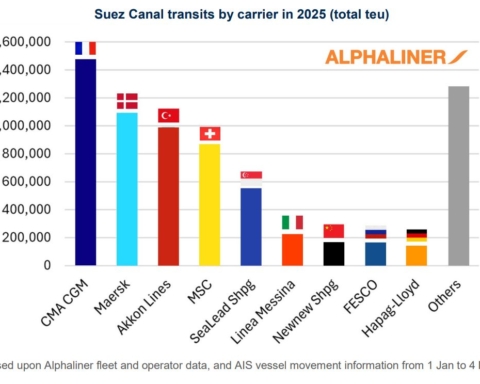Those who pay more don’t always get better service. This is especially true in maritime transport, where higher tariffs are not necessarily matched by more reliable schedules.
This is what Sea-Intelligence reports, based on seven pairs of ports in an analysis which compares data on schedule reliability with freight rates from the World Container Index (WCI).
The consulting firm noted how, for each of the port pairs, the correlation between the two factors is weak or even absent. The only exception is the Shanghai-Rotterdam trade route where about 63% of the variation in freight rates can be explained by changes in schedule reliability. However, the trend line, i.e. the determination coefficient (R2) highlighted in the graph, remains negative. Which means that during periods with high schedule reliability, freight rates were low and vice versa.
According to Sea-Int. CEO Alan Murphy, reliability tends to improve when there is excess capacity, because it is easier, in that case, to meet the schedule. That also means, however, that high reliability occurs primarily at times when rates go down.
Indeed, this is what happened during the pandemic. Initially, schedule reliability appeared to be higher in correspondence with shrinking market demand, while it progressively deteriorated as the congestion problems which many ports suffered from increased.
Translation by Giles Foster




